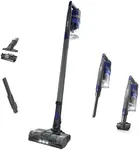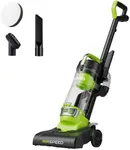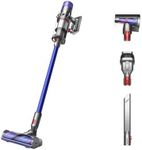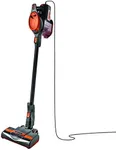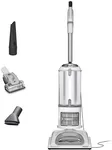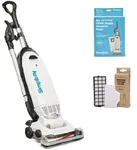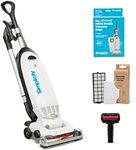Buying Guide for the Best Vacuum For Apartments
Choosing the right vacuum cleaner for your apartment can make a significant difference in maintaining a clean and healthy living space. When selecting a vacuum, consider the size of your apartment, the types of flooring you have, and any specific cleaning needs such as pet hair or allergies. Here are some key specifications to consider and how to navigate them to find the best fit for you.Type of VacuumThere are several types of vacuum cleaners, including upright, canister, stick, handheld, and robotic. Upright vacuums are powerful and great for large areas, but they can be bulky. Canister vacuums are versatile and easier to maneuver, especially in tight spaces. Stick vacuums are lightweight and convenient for quick cleanups. Handheld vacuums are perfect for small messes and hard-to-reach areas. Robotic vacuums offer automated cleaning but may not be as thorough. Consider the layout and size of your apartment to determine which type suits your needs best.
Suction PowerSuction power determines how effectively a vacuum can pick up dirt and debris. Higher suction power is generally better for deep cleaning, especially on carpets. However, for apartments with mostly hard floors, moderate suction power may suffice. Look for vacuums with adjustable suction settings to cater to different surfaces and cleaning tasks.
Filtration SystemA good filtration system is crucial for trapping dust, allergens, and other particles. HEPA filters are highly effective and recommended for people with allergies or asthma. Standard filters may be adequate for general cleaning needs. Consider your health requirements and the level of air quality you want to maintain in your apartment when choosing a vacuum with the right filtration system.
Noise LevelVacuum cleaners can be noisy, which might be a concern if you live in an apartment with thin walls or have neighbors close by. Noise levels are measured in decibels (dB). Quieter vacuums typically operate at around 60-65 dB, while louder models can exceed 70 dB. If noise is a concern, look for vacuums specifically designed to operate quietly.
Weight and ManeuverabilityThe weight and maneuverability of a vacuum cleaner are important factors, especially if you have limited storage space or need to carry the vacuum up and down stairs. Lightweight models are easier to handle and store, while vacuums with swivel steering or compact designs can navigate around furniture and tight spaces more easily. Consider your physical capabilities and the layout of your apartment when evaluating these features.
Bagged vs. BaglessVacuum cleaners come in bagged and bagless designs. Bagged vacuums use disposable bags to collect dirt, which can be more hygienic and reduce exposure to dust when emptying. Bagless vacuums have a dustbin that needs to be emptied regularly, which can save money on bags but may release some dust during the process. Think about your preference for convenience and hygiene when deciding between the two.
Attachments and AccessoriesAttachments and accessories can enhance the versatility of your vacuum cleaner. Common attachments include crevice tools, dusting brushes, and upholstery tools. These can help you clean various surfaces and hard-to-reach areas more effectively. Consider the specific cleaning tasks you need to perform in your apartment and choose a vacuum with the appropriate attachments.
Corded vs. CordlessCorded vacuums offer consistent power and are suitable for longer cleaning sessions, but they can be less convenient due to the need for a power outlet. Cordless vacuums provide greater mobility and are easier to use in small spaces, but they rely on battery life, which may limit their usage time. Consider the size of your apartment and your cleaning habits to decide which option is more practical for you.

